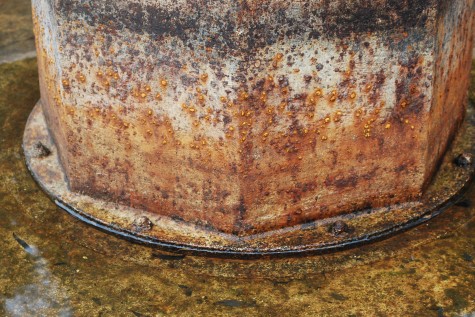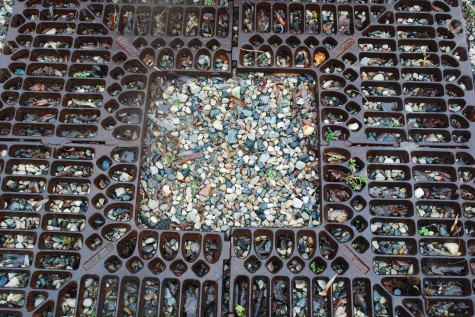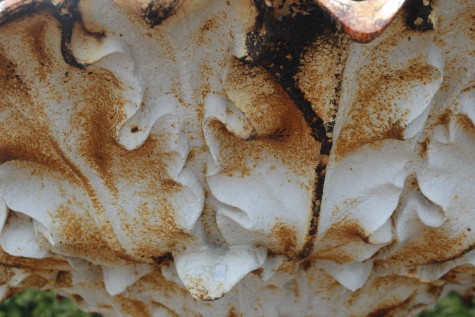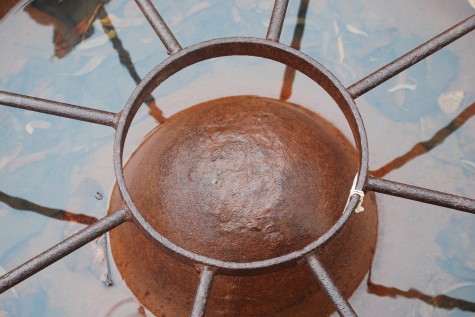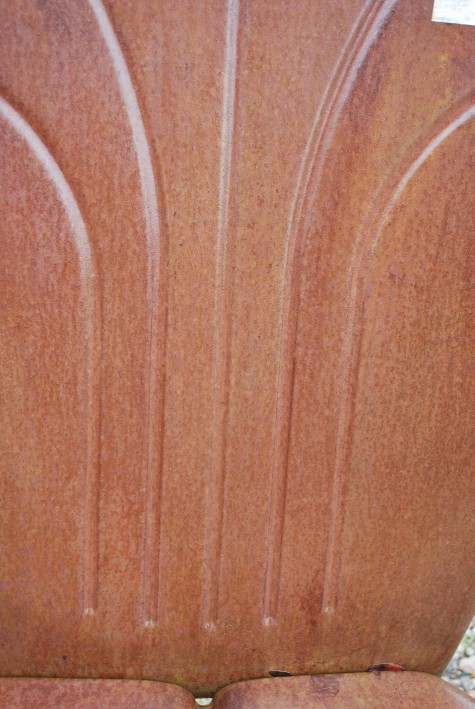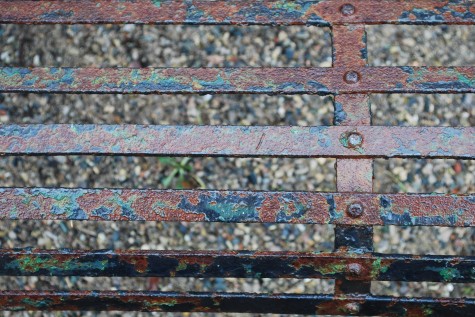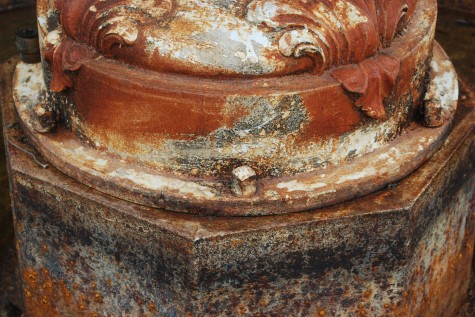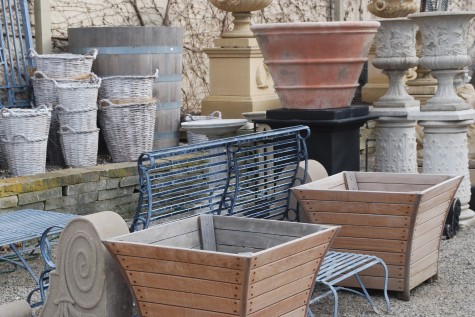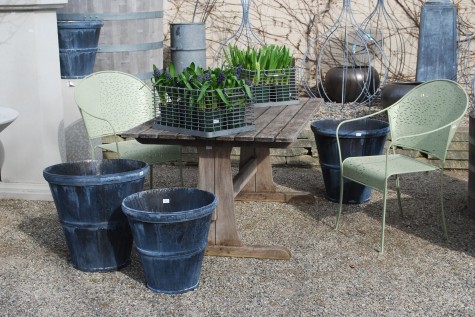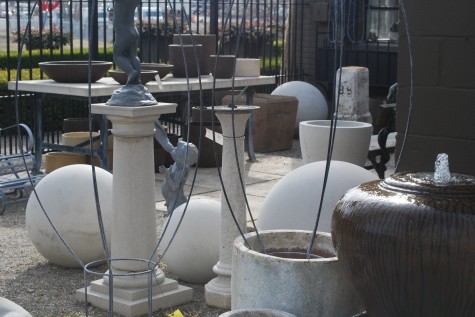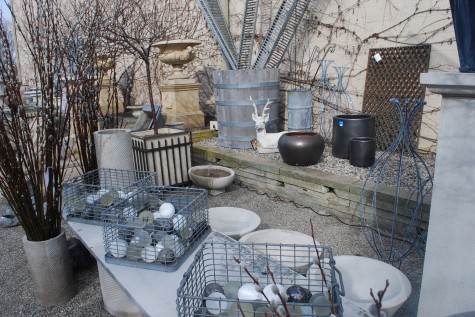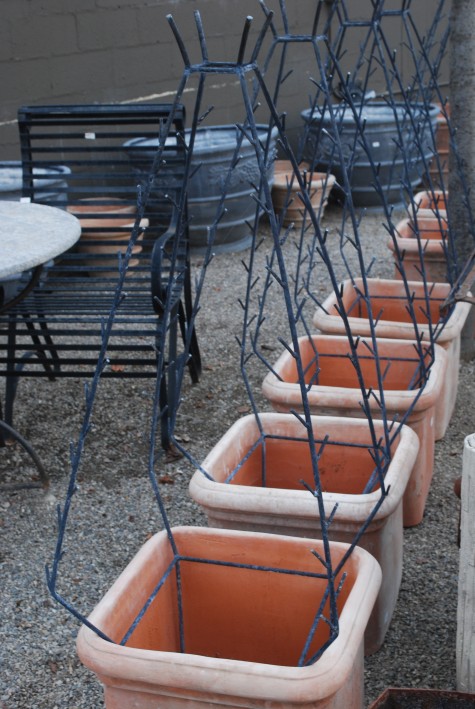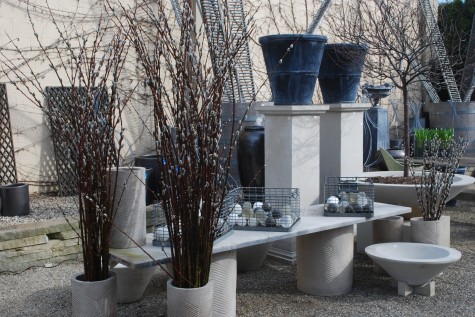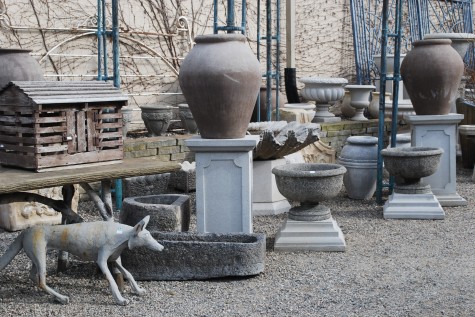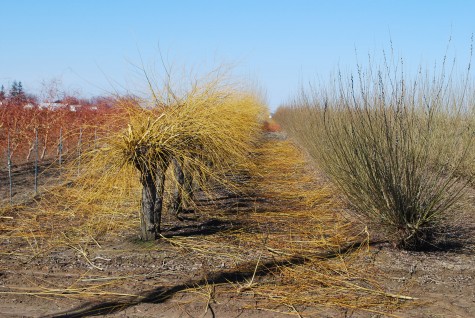
Last March, when I was thinking about taking on writing a daily blog for the first time, I had some ideas about it-not the least of which had to do with the seasons. I wanted to write what I thought day to day-not especially about the past, and maybe a bit about the future. The news of the day-in this I was most interested. The winter is excruciatingly long in Michigan; making writing for day to day interest in the depths of my winter, for other gardeners stuck in a similar spot, a challenge. In defense of the winter months, lots of design issues can be broached and discussed. I have done that, maybe in more detail than you like. The 2010 store collection and how it came to be looks great-but all of this is lacking a certain kind of life. No collection comes to life until the plants get here. All I have a mind to do right now is think and talk about plants. Steve has been on a road trip, checking out nurseries from whom we have plants ordered and soon to be on the way. Relevant to my Sunday post about pollarding, his photograph above is of a willow stock plant, being pollarded. The branches will not be used for firewood, as they are frequently used in Europe-these rootless cuttings will be sent out to growers all over who wish to grow on this cultivar. These trimmings will become trees someday.
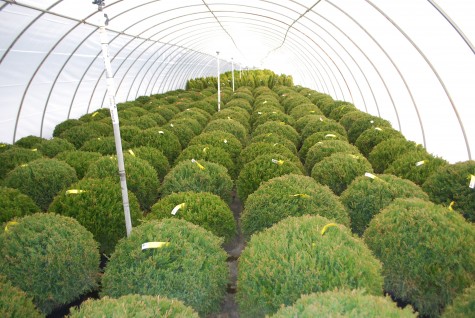 Some older boxwood specimens spend the winter in tunnel houses. Winter snow loads can devastate what has taken many years to grow. A tiny boxwood you may purchase at a nursery most likely takes seven years to get to that 12″ size. Bigger plants take many more years to grow. Nursery people do what they can, to protect what has taken so much of their time and effort, to grow on.
Some older boxwood specimens spend the winter in tunnel houses. Winter snow loads can devastate what has taken many years to grow. A tiny boxwood you may purchase at a nursery most likely takes seven years to get to that 12″ size. Bigger plants take many more years to grow. Nursery people do what they can, to protect what has taken so much of their time and effort, to grow on.
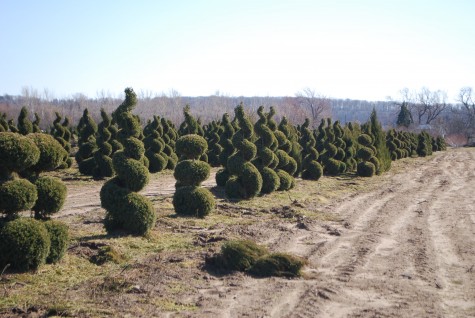 I so love this photograph of Steve’s. The dirt road, impressed with dusty tractor tracks, is in stark contrast to these painstakingly grown and trimmed plants. Wow-do you not think you are looking at an alternative planet? Or at the very least an alternative idea about plants? Like trimmed topiary plants or not, the energy, will and work cannot be denied. Growers and gardeners-a relationship.
I so love this photograph of Steve’s. The dirt road, impressed with dusty tractor tracks, is in stark contrast to these painstakingly grown and trimmed plants. Wow-do you not think you are looking at an alternative planet? Or at the very least an alternative idea about plants? Like trimmed topiary plants or not, the energy, will and work cannot be denied. Growers and gardeners-a relationship.
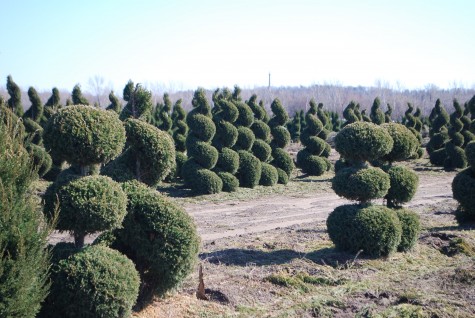 I spoke for a big group of these plants. They are beautifully grown, and healthy. But I mostly admire the hand in evidence that sculpted these plants. Make no mistake-so many years, so much effort, so much passion-one has to pause and admire what made this field come to be. Growers by and large have no prize in mind-they grow, and live to grow. Their hands-I plan to celebrate them. I am sure you do too.
I spoke for a big group of these plants. They are beautifully grown, and healthy. But I mostly admire the hand in evidence that sculpted these plants. Make no mistake-so many years, so much effort, so much passion-one has to pause and admire what made this field come to be. Growers by and large have no prize in mind-they grow, and live to grow. Their hands-I plan to celebrate them. I am sure you do too.
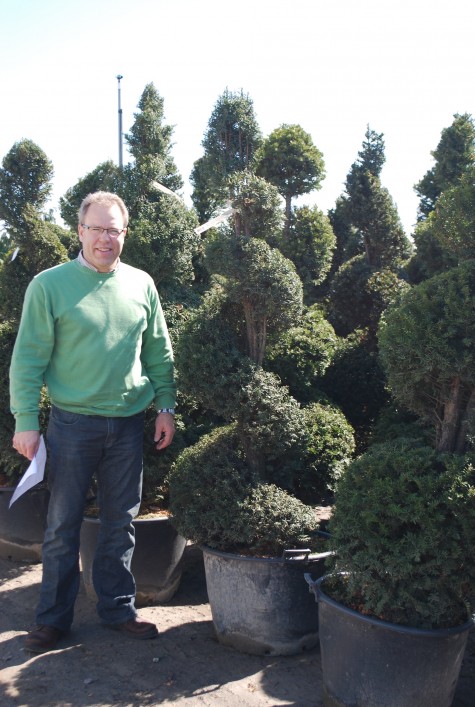 I see junipers grown and trimmed in this fashion regularly. Yews grown like this-news to me. When I think old, gorgeous, and thoughtfully grown yews, I think England. I am now seeing old and trained yews on my side of the pond-I will have some. Sensational topiary plants grown on this side of the ocean-I am clapping my hands.
I see junipers grown and trimmed in this fashion regularly. Yews grown like this-news to me. When I think old, gorgeous, and thoughtfully grown yews, I think England. I am now seeing old and trained yews on my side of the pond-I will have some. Sensational topiary plants grown on this side of the ocean-I am clapping my hands.
![securedownload[1]](https://deborahsilver.com/wp-content/uploads/2010/03/securedownload1-475x633.jpg)
Buxus Sempervirens is not hardy in my zone. I have avoided the plant like the plague-who wants to deal with a serious gardener’s grief when they loose a major plant? I cannot plant this species of boxwood in the ground-all of us need to be committed to taking them into the garage for the winter. These topiary grown and trimmed boxwood would make my heart pound, planted in pots-a handtruck taking them to shelter for the winter is well worth the effort.
![securedownload[1]](https://deborahsilver.com/wp-content/uploads/2010/03/securedownload11-475x633.jpg)
![securedownload[2]](https://deborahsilver.com/wp-content/uploads/2010/03/securedownload2-475x356.jpg)

